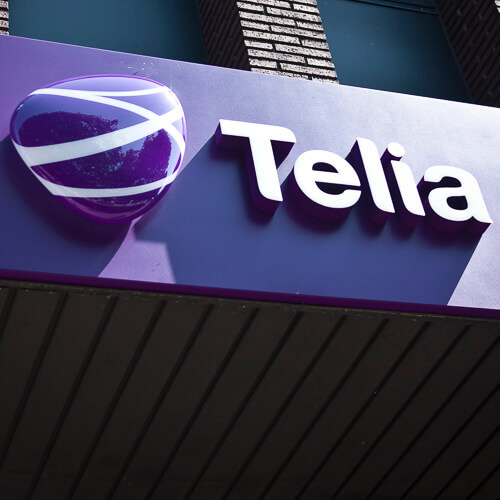
Winter came early for Sweden's telco Telia, whose net income in the third quarter dropped to 1.64 billion kroner ($186.2 million) from 2.57 billion a year ago. Sales were down, too, by 1.2% to 21.27 billion kroner.
But there were spots of sun though in the Swedish sky. The company's EBITDA (earnings before interest, tax, depreciation, and amortisation), at 7.81 billion kroner ($908.81 million), beat analysts' consensus forecast of 7.75 billion.
Figure 1:  It's cold out there: Telia sees net income drop by 36% in the third quarter, as it sells towers and struggles through a restructuring.
It's cold out there: Telia sees net income drop by 36% in the third quarter, as it sells towers and struggles through a restructuring.
(Source: Håkan Dahlström on Flickr CC2.0)
That was 4.9% lower than a year ago, but the company says the full-year figure will be flat or show single digit growth.
By the towers of Brookfield
The Nordic operator faces headwinds as it attempts to restructure itself, admits its CEO Allison Kirkby, an Scandinavian telecoms industry veteran who took over in May 2020. Its new strategy, which Kirkby unveiled at the start of this year, involves a new unit called Telia Asset Management to hold some of the company's 25,000 towers and rooftop sites across the Nordics and Baltics.
Telia's tower footprint is the biggest in the region. It has about 4,700 towers in Finland and Norway. It then sold a 49% stake in these Finnish and Norwegian towers to the infrastructure investment firm Brookfield and the Swedish pension fund Alecta, for €722 million.
That deal then brought its net debts down to around 2.1x Ebitda.
The European Commission has approved the transaction, which is "pending final regulatory approval," and should be finalized in the last three months of 2021, the company said today. Telia also sold its Telia Carrier internet backbone business in June, as part of a general unwinding from the company's non-core investments.
Polhem Infra, an investor owned by three Swedish pension funds, paid 9.45 billion Swedish kronor for the business. Telia once owned an international business that stretched from Turkey to a base station located 5,000 metres up Mount Everest. But these global ambitions have faltered at the feet of low returns and an almost $1 billion fine in 2017 connected with allegations it had paid $330 million in bribes to break into the Uzbekistan market.
It booked a capital loss of about $350 million on the $530 million disposal of its 47.1% stake in Turkcell.
Telia TV and chill
It also has splashed out big on sports rights, for tournaments like the UEFA Champions League where it acquired the Swedish and Finnish rights in May. This has been a good game for the telco. Its subscription video on demand (SVOD) offerings, Telia TV and C More, ended the third quarter with 835,000 subscribers, up 29.1% from a year before.
At its streaming service C More, "we have seen a 40% growth in sport related subscriptions," says Kirkby, who also sits on the BT Group board. The C More service has run at a loss, and the company had sought to extract it from its TV4 Media division.
Telia will launch HBO Max on October 26, replacing HBO Nordic, which Telia has a ten-year partnership with.
5G all that you can be
The company's 5G subscriptions are "beginning to move", too. These are up to 145,000 of its subscribers in Finland, although this is only 4.5% of its total base, notes telecoms analyst Phil Kendall on Twitter. But Telia's network now covers 54% of the Finnish population, and 31% in Norway. In Estonia, it is the only 5G provider.
Want to know more about 5G? Check out our dedicated 5G content channel here on
Light Reading.
Its 5G customers use 40% more data than 4G. Kirkby will be grateful today to be able to point to spots of growth like a 2.3% gain in service and positive trends in Norway.
But whether her new strategy, full of buzzwords about "Reinvent a Better Telia" and "Connect Everyone," actually stands to revive the fortunes of the debt-junkie carrier remains to be seen.
Related posts:
— Pádraig Belton, contributing editor special to Light Reading
Read more about:
EuropeAbout the Author(s)
You May Also Like












